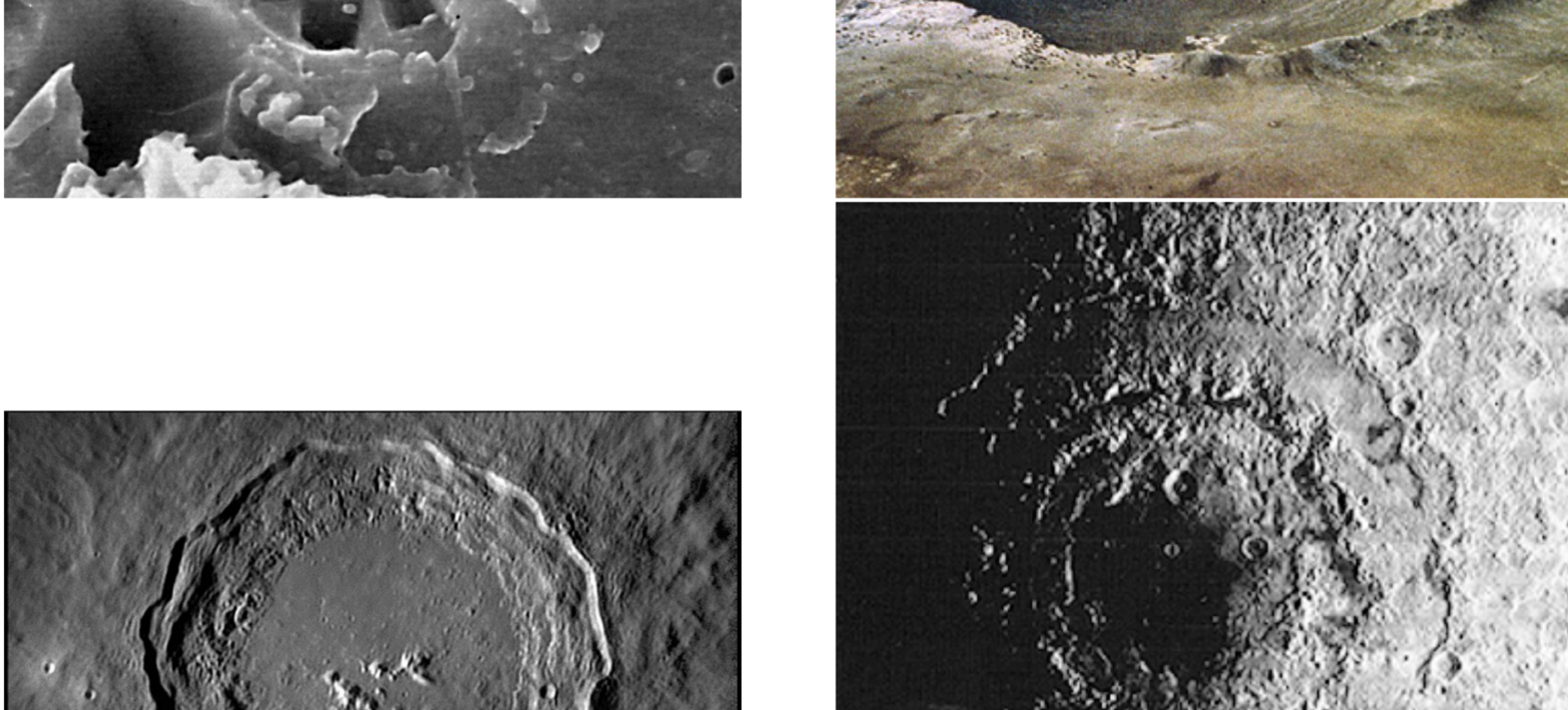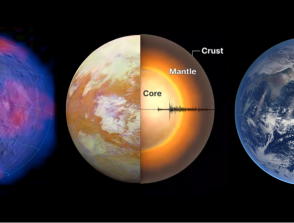Modeling the impact bombardment of the planets and moons, with applications to the dating of surfaces by crater counting

Start: 03 October 2005
End: 03 October 2008
Supervisors :
Mark Wieczorek
Related teams :
Planetology and Space Sciences
Status: Defended
The aim of this work is to give new estimates of the cratering rate on the Moon and terrestrial planets. We first build a realistic impacting population by using observations and models of the orbital distribution of the asteroids and comets that evolve in the inner solar system. Impact probabilities are then calculated as a function of the encounter conditions with the planet (velocity, direction), by the use of existing formulas. In the case of the Moon, we establish appropriate probabilities, applicable to any other satellite. We calculate the impact flux and impact conditions as a function of the position on the target body, with new analytical tools. Using the latest scaling law that relates the impact to the crater size, we convert our estimates in terms of cratering rate.
Our model reproduce very well the size-frequency distribution of observed lunar craters, under the assumption that the surface regolith implies that small craters form in the porous regime, while large (and thus deep) craters form in the non porous regime. The absolute number of simulated craters is in agreement with the common statement that the impacting population, resupplied via resonnances inside the main asteroid belt, has been in a state of relative equilibrium during the last three billion years. We predict spatial variations of the cratering rate, in particular on Mars and the Moon. The martian poles, once the obliquity variations taken into account, accumulate the craters at a rate 30 % higher than the equator (per unit area). On the Moon, as the synchronous rotation induces longitudinal variations, the minimum is at (±60◦N, 90◦E), while the maximum, almost 50 % higher, is located at (0N, 90W ). The lunar results seems to be validated by some observations, even if uncertainties of these latest are high. Daily variations of the meteoritic flux on Earth are consistent with radar observations. For the entire population of Earth-crossers, we expect a flux that reaches a maximum at noon and another at midnight. By considering faster and faster projectiles, the flux concentrates at 6 a.m.
Surface ages are linked to crater densities, through an empirical relationship built with the lunar samples. In essence, this relationship predicts a constant accumulation of craters during the last three billion years, and an exponential enhancement beyond. We correct the calibration points by accounting for the spatial variations. It follows that the reference analytical solution is reinforced. One should account for the location of a geologic unit to be dated to convert the measured crater density into a global average on the entire surface on the planet. Even if the uncertainties of the method are generally higher than errors induced by spatial variations, the bias can be as high as 800 millions years in worst case. Having estimated the cratering rates relative to the Moon, the datation method can be applied to other planets . Our results gives new estimates of several surface ages. For example, the surface of Venus is estimated to be about 230 Myr old. Caloris Mare, on Mercury, is dated at 2.70 Gyr. We calculate the time of accumulation of terrestrial cratons as 380 Myr, which is in perfect agreement with geologic data.




